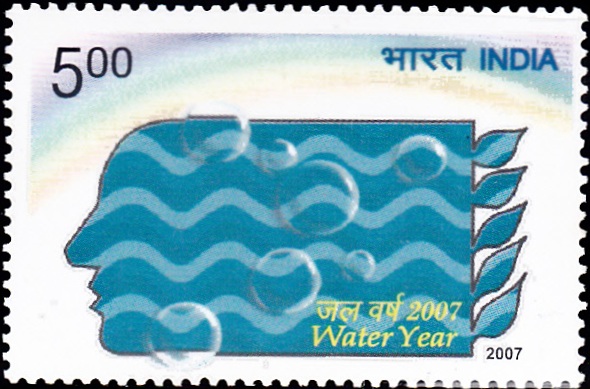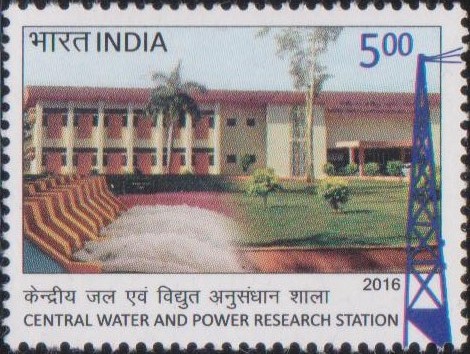
Indian Rainwater Harvesting
A commemorative postage stamp on the Rain Water Harvesting (RWH) System in India :
 Issued by India
Issued by India
Issued on Jun 5, 2006
Issued for : In sharing the global concerns regarding water management, the Department of Posts is happy to carry forward the message of conservation by issuing a commemorative postage stamp on Rainwater Harvesting.
Credits :
Stamp & FDC : Sankha Samanta
Cancellation : Alka Sharma
Type : Stamp, Mint Condition
Colour : Multicolor
Denomination : 500 Paise
Stamps Printed : 3.0 Million
Printing Process : Photogravure
Printer : India Security Press, Nashik
About :
- Water is an extremely precious commodity. Essential for sustaining life on this planet, water has traditionally been treated with reverence by all societies and cultures. However, the rapid growth of industrialization, and population growth and concentration in urban centres, have contributed to pressures on existing water resources. Erratic and inadequate rain, and changes in rainfall patterns and climatic conditions have also impacted landscapes and availability of water around the world. Water covers about 3/4 of the earth’s surface, but only about 2% is fresh water, and a larger portion of it is polar ice. As a result, there is now an increasing awareness of the very real threat posed by dwindling fresh water resources and the need to conserve every drop of water in order to safeguard the future of generations to come.
- Rainwater harvesting, which entails collecting and storing rainwater for future productive use, is one of the major initiatives that can be pursued for augmenting our water reserves. A practical and time tested method, used since ancient times, rain water harvesting can substantially help alleviate water scarcity in both urban and rural areas. While run-off water can be diverted into bare soil or ground for improving the ground water table, run-off water from roof tops and other built-up areas like pavements, parking lots, playgrounds etc. can be channeled into suitably designed storage structures for providing a reliable water source around the year.
- At present India uses only 10 to 20% of its annual rainfall, while observations made in various countries show that between 80 to 85% of all precipitation can be collected and stored. In fact, if collection and storage of rainwater is designed properly, it is possible for a family to live for a year on rainwater alone in areas with rainfall as little as 100 mm per year.
- With new techniques and technologies the designing and construction of rainwater harvesting systems is becoming easier and more cost effective. In places where there is no roof or rocky outcrop suitable for rainwater collection, it is possible to construct an impervious surface on the ground itself. A drainage system has to be built to connect the water harvester to the reservoir, which may be a lake, pond, artificial ditch, trench, a well, or underground tank. A settling pit will help filter the turbidity and other pollutants, and this water can be used directly for washing, flushing, gardening and agriculture etc. to provide a cost effective local solution for many industrial, domestic and agricultural needs.
- Community participation is vital in order to carry forward the movement of conserving rainwater rather than allowing it to go waste. Hence, we need to educate people about the critical relevance of rainwater harvesting in today’s scenario where water is becoming a scare commodity. We also need to create awareness and inculcate a culture of water conservation combined with efficient management of water resources and prudent consumption of water. Contamination of water sources is also a very serious issue that needs to be addressed in order to make fresh water availability sustainable.
- Text : Based on the material provided by the proponent.








[…] Several and areas around the Math have been revitalized and made green by planting saplings. Water harvesting, vermiculture, bio-friendly manures, gobar gas have all been adopted by the Math. The Handmade […]
[…] community service projects in different parts of the world, rehabilitation and total health care, rainwater harvesting and many more socially relevant […]